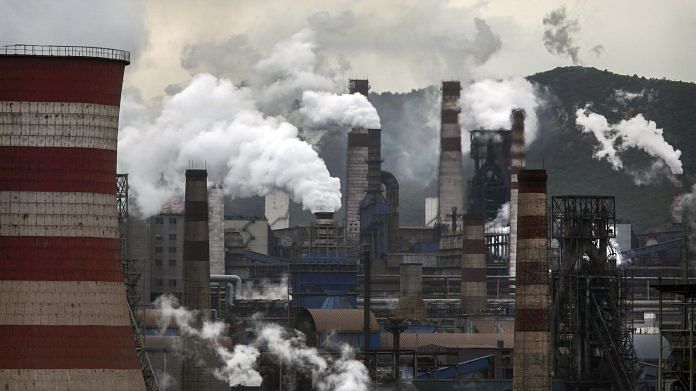China’s vast steel sector is the scene of a conflict between economic growth and a green agenda that points to wider challenges as President Xi Jinping tries to clean up the world’s top carbon emitter.
The government is pushing for steel output to drop from a record of more than 1 billion tons, in a campaign triggered by Xi’s pledge to deliver a carbon neutral economy by 2060. But early moves to squeeze steelmakers have fired up prices and created a headache for policymakers fretting about surging inflation.
The clash of priorities was evident in Premier Li Keqiang’s recent call for stronger controls on commodities markets. His comments followed data that showed producer prices rising in March at the fastest pace since July 2018, a trend that could impede the economy’s recovery.
Top executives from industrial materials firms, including steelmakers, have been called into government meetings to discuss why prices are rising and how to respond, according to people familiar with the matter. Steel mills have enjoyed a surge in profitability and the biggest, Baoshan Iron & Steel Co., has seen its Shanghai-listed shares advance almost 40% this year while the benchmark index has edged lower.
“With steel, they really have no-one they can blame but themselves,” Atilla Widnell, managing director of Navigate Commodities, said by phone from Singapore. Trying to keep production in check alongside stimulus-fueled demand has inevitably meant much higher prices, he said.
Steel coil in China, used in everything from cars to buildings, is the priciest it’s been since 2008. Aluminum, also the subject of carbon policies, has reached decade-highs. Strong demand is playing a big part along with supply cuts, as China’s economic rebound from the pandemic is heavily dependent on commodity-intensive sectors like construction.
Letting inflation run too hot is a risk to the economy because it ends up sapping demand for products, or provoking the authorities to put restrictions on the monetary and fiscal measures that promote growth.
It’s a global concern that obviously stretches far beyond steel as nations chart their course out of the pandemic, and China doesn’t break down its producer price index by specific sectors. But steelmaking is vital to its economy, employing huge numbers, and the effect on prices of reining in supply shows how governments will have to tread a careful path as they restructure dirty but important industries.
Spewing Carbon
China produces well over half the world’s steel and the sector has long been targeted by the authorities for persistent pollution. But it’s no longer just smokestack smog that’s drawing the government’s attention. The industry is also responsible for about 15% of the carbon that China spews into the atmosphere every year.
“The carbon-neutral initiative will put persistent pressure on producer prices in coming years,” Zhiwei Zhang, chief economist of Pinpoint Asset Management Ltd. in Hong Kong said by email. “The price impact may show up first in the usual suspects such as steel which is carbon intensive, but it’s likely to spread out to more manufactured goods because of the general shift from coal to new energy.”
China has ordered cuts in the key steelmaking hub of Tangshan in the north of the country, and vowed nationwide checks to make sure regions aren’t flouting capacity curbs. Tangshan’s crackdown will likely be repeated around the country amid “vigorous enforcement of China’s supply curtailment policies,” Citigroup Inc.’s Tracy Liao said in an emailed note.
Premier Li’s comments on inflation didn’t offer specific measures to combat higher commodities prices. The government is considering an adjustment to taxes to bring in more overseas steel and plug any domestic shortfall. But that’s complicated by a very strong rebound in the global steel market.
It leaves policymakers with a puzzle that may not have a solution. “How can they cut steel production?” said Navigate’s Widnell. “The answer is I don’t think they can.”- Bloomberg
Also read: Will India hit its net-zero carbon target by 2050? That depends on its steelmakers



